
Groundbreaking has taken place on a new elementary school in Amesbury, Mass. Construction of the Sgt. Jordan Shay Memorial Lower Elementary School was approved by city residents in 2019.

Loyola Academy, a private Jesuit college preparatory school in Wilmette, Ill., recently broke ground on a brand-new, 29,000-square-foot performing arts center. The Loyola Academy Center for the Performing Arts comes with a $25.76-million price tag and will feature flexible indoor and outdoor performance spaces.
Construction on a new language arts complex recently began at Golden West College in Huntington Beach, Calif. The college is partnering with Sundt Construction, Inc., on the facility.
The town of Mansfield, Conn., broke ground last week on the state’s first net-zero elementary school. Local politicians, town administrators, parents and students attended the ceremony on Thursday, June 25. The new school, which has yet to be named, will replace the town’s three existing elementary schools.

Architecture firm SRG Partnership recently announced that it has designed a Net Zero energy building for the Cascades Campus of Oregon State University in Bend, Ore. Edward J. Ray Hall will serve as a Science, Technology, Engineering, Arts and Math (STEAM) learning center featuring both interior and exterior active learning spaces.
Energy and sustainability solutions company Schneider Electric announced this week that it is partnering with Gulf Shores City Schools in Gulf Shores, Ala., on a system-wide modernization project. The project’s goals are to boost district sustainability and energy efficiency, increase student engagement, and boost opportunities for STEM education.

Regents at the University of California have approved the construction of an $84-million Education Building II for the School of Medicine at UC Riverside. Hensel Phelps + CO Architects have been selected as the project’s design-build partner. Work on the project will begin shortly, and the team is scheduled to break ground early this summer.

The 2021 hurricane season is upon us. As we continue to see year-in and year-out the higher frequency and increased intensity of hurricanes, experts agree that we must continue to strive for greater preparedness for our communities.
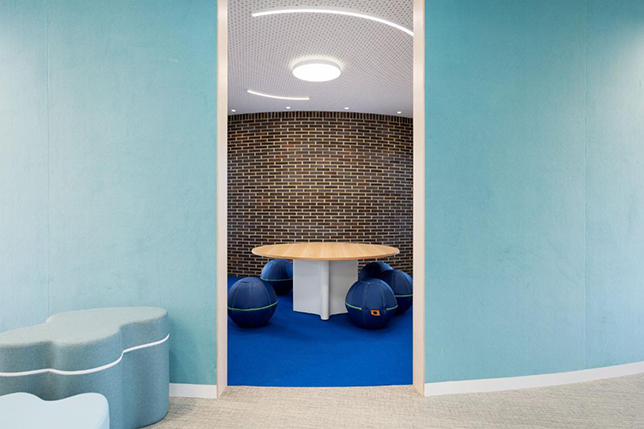
A recent study conducted by the University of Oregon evaluated sunlight's impact on dust and germs in an indoor space. According to the research, published in the journal Microbiome, rooms exposed to daylight have fewer germs and half the viable bacteria compared with dark rooms.
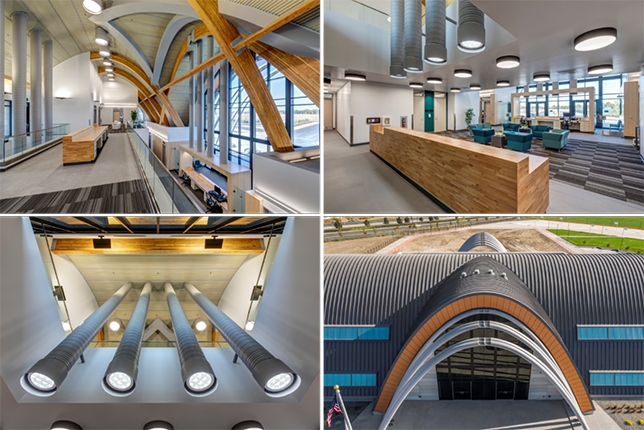
The Tustin Legacy Magnet School, which sits right between the two iconic U.S. Navy and Marine Corps Air Station (M.C.A.S.) North and South blimp hangars, acknowledges and celebrates its historic neighbors with outstanding design features.
On the campus of Piedmont Virginia Community College in Charlottesville, Virginia, construction of the Advanced Technical Training Center is scheduled for completion in spring 2023. The center will be the first higher education facility in the state—and one of just a few community college buildings across the U.S.—to achieve net zero energy.

The University of Arkansas is about to embark on a new round of energy-saving upgrades for its campus. The improvements will include the addition of LED lighting; fault detection diagnostics; upgrades to HVAC; and examination of building envelope systems and other retro-commissioning work. In total, the latest project will encompass some six million square feet of facilities.
The Long Beach Unified School District (LBUSD) in Long Beach, Calif., has announced that it will add solar canopies in 21 schools in an effort to meet sustainability goals. The solar canopy systems will be owned and operated by Standard Solar, Inc., a nationally recognized community solar assets solutions company.
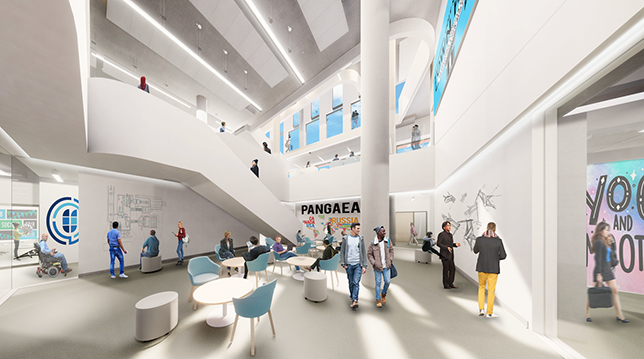
A new $48-million building on the campus of Ontario Tech University's north Oshawa campus will "respond" to sunlight and solar orientation. The project will deliver 80,000 square feet of new, technology-enhanced academic, administrative and student support spaces along with amenities and social spaces to the UOIT Academic Building.

SchenkelShultz Architecture announced this week that construction of the Middle-High School at the P.K. Yonge Developmental Research School in Gainesville, Fla., is complete. The public, K–12 school was designed to meet the LEED Gold Certification standard as set by the U.S. Green Building Council.
Harvard University recently saw construction finish on its new Science and Engineering Complex (SEC), located across the Charles River from its main campus in Cambridge, Mass. The complex, designed by Behnisch Architekten, is set to open to students in fall 2021.
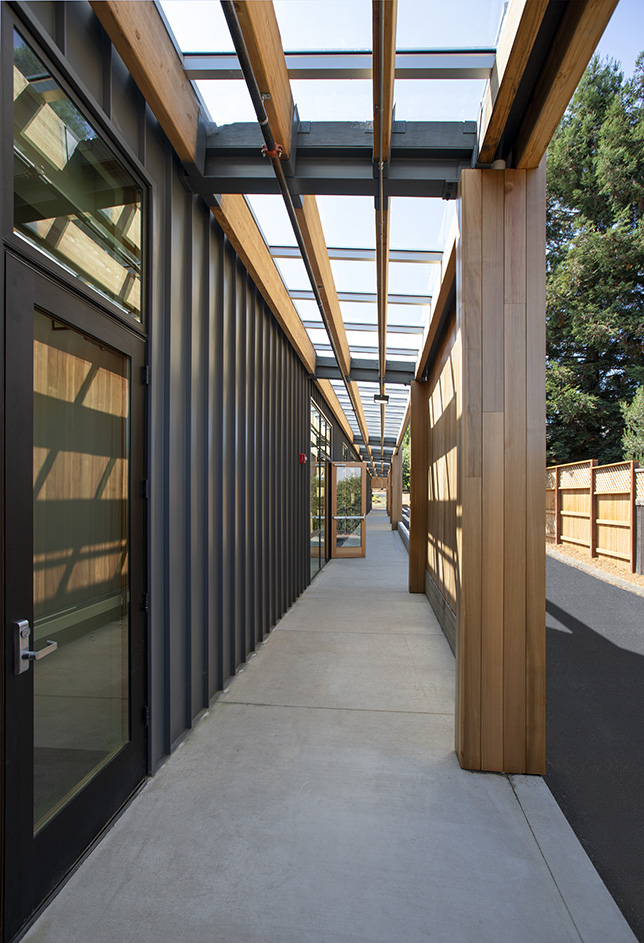
EXTECH/Exterior Technologies, Inc. has provided skylight systems for the new Spring Hill School middle school campus in Sonoma County, Petaluma, Calif. The campus opened its doors to students for the first time for the 2019-20 school year.
At Rice University in Houston, Texas, the Betty and Jacob Friedman Holistic Garden recently received a solar upgrade and other improvements courtesy of the Green Mountain Energy Sun Club.

Commercial flooring solutions company Mohawk Group has announced the release of its Data Tide collection, a variety of modular carpet planks with a design evoking the visualization of water.

Twister. Funnel. Whirlwind. A tornado by any other name is still considered the deadliest and most destructive natural disaster on earth. Occurring on all continents except Antarctica, tornadoes have both terrified and fascinated mankind for centuries. The U.S. averages almost 1,300 tornadoes per year, more than all other continents combined. How do we protect ourselves when a tornado strikes? It is this question that has driven architects, engineers and the construction industry to develop codes and guidelines such as ICC 500 and FEMA P-361. These guidelines, at least in part, will help to ensure the proper construction of tornado shelters in order to save lives.

Susquehanna University’s solar array was built in 2018, just outside the city of Selinsgrove, Pa. And from April through November of each year, the university enlists help from an unconventional source to help keep the 14-acre site maintained.
Georgetown University, located in Washington, D.C., recently announced a partnership with ENGIE North America to promote sustainability and energy conservation. ENGIE will manage the university’s utility system in an effort to help it achieve its sustainability goals.
Stevens Institute of Technology has announced that it intends to fill all of its electricity needs from local renewable energy sources by October 2021.
Clean technology integrator Ameresco, Inc. has announced a partnership with Holy Cross Energy to build a solar and battery energy storage project on land leased from the Spring Valley Campus of Colorado Mountain College, located in Glenwood Springs, Colo.

A school district in Northern California will be adding new infrastructure to bring down the cost of recharging its electric school bus fleet. Palermo Union Elementary School District has signed with AMPLY Power, which will supply energy management intended to reduce the cost to a dime per kilowatt hour versus 19 to 39 cents/kWh under the previous charging program.
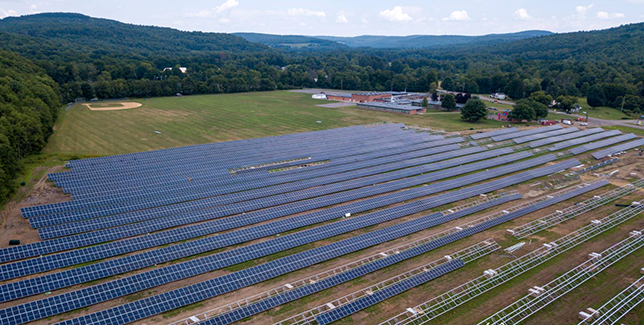
A New York school district is now generating all of its electricity needs through a 4.1-megawatt solar project. Maine-Endwell Central School District in Endwell activated its system, located on district property next to an elementary school, on March 23. It's expected to save the district more than $6.2 million in future energy costs over the course of 25 years.
Two Illinois public school districts recently purchased electric school buses from Georgia-based bus manufacturer Blue Bird Corporation. These buses are both the first operational electric school buses in the state, as well as the first commercial application of vehicle-to-grid (V2G) technology in the country.
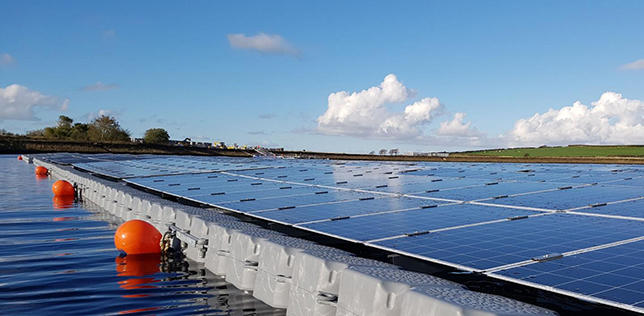
Solar panel arrays that cover canals and other waterways—also known as floating solar farms—have become an increasingly intriguing possibility as sustainable energy practices gain momentum. Researchers from the University of Stirling in Stirling, Scotland, and Lancaster University in Lancashire, England, have finished the first detailed model of floating solar installations’ environmental effects on the bodies of water they cover.